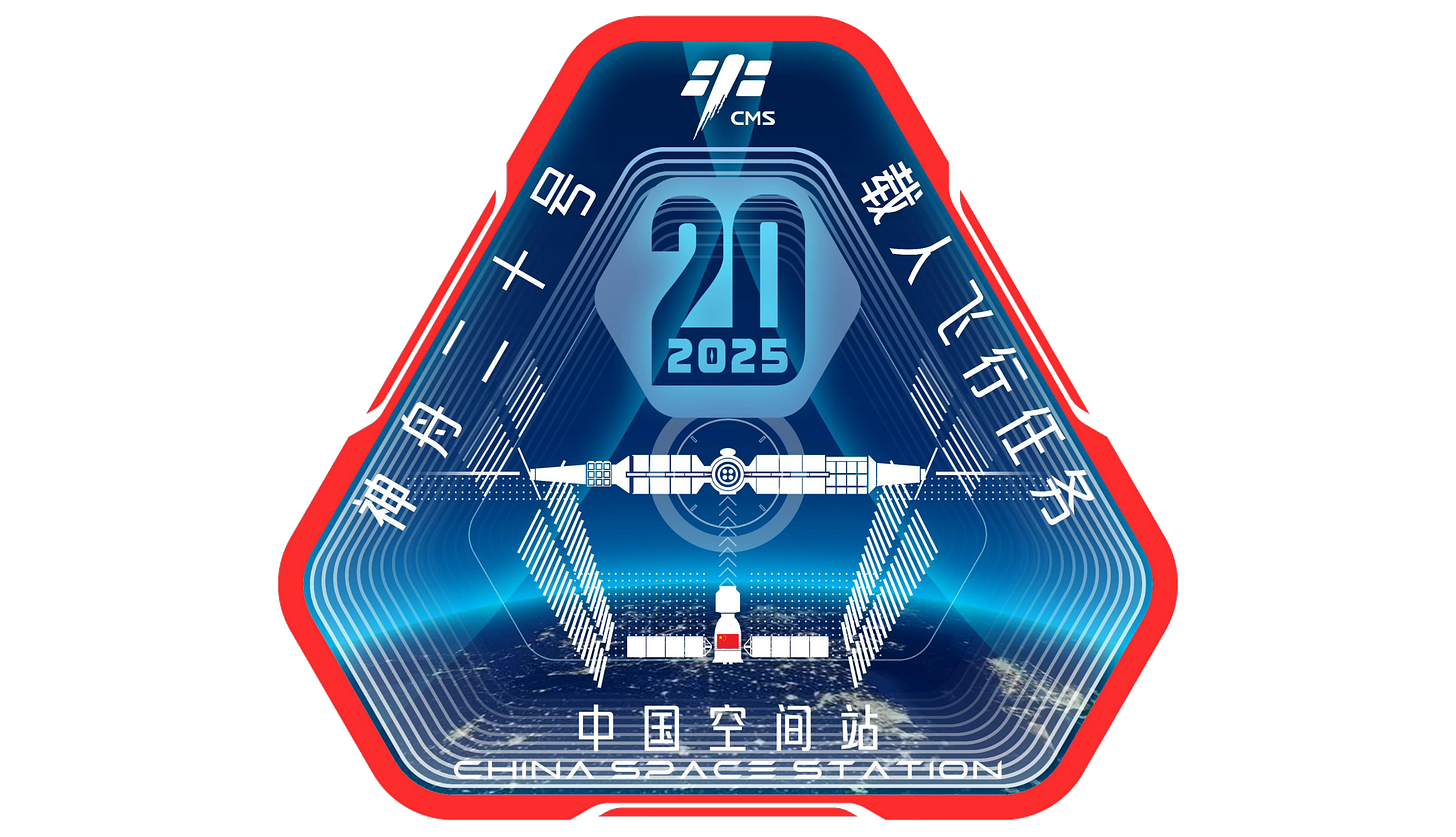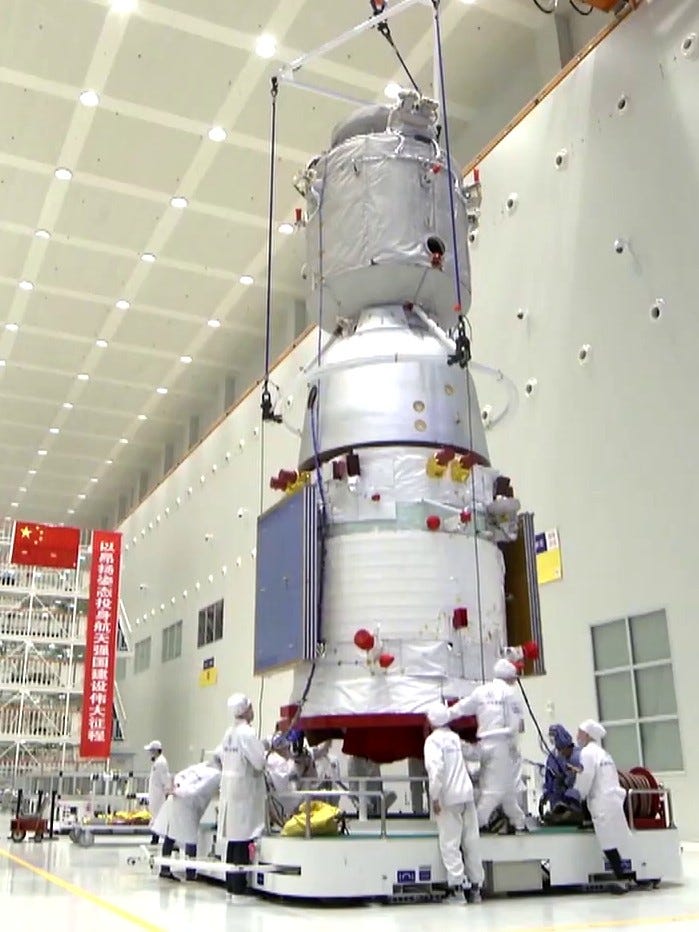Long March 2F/G Prepares to Support Shenzhou-20 Mission
China's fifteenth crewed mission is a week away from launch.
On April 16th, the Long March 2F/G Y20 vehicle, with the Shenzhou-20 crewed spacecraft, rolled out to its launch pad at the Jiuquan Satellite Launch Center, the China Manned Space Agency (中国载人航天) announced. Transportation of the combined vehicle took just over two hours.
At present, final pre-launch tests of the launch vehicle and spacecraft are being performed. Some of those tests may be for upgraded data downlink antennas, which could provide high-resolution onboard video.
A launch date has not been announced for the mission, with several days in consideration, but a launch is likely between April 23rd and 25th. In support of the launch, the Tiangong Space Station has performed maneuvers to better adjust its position and orbit to allow the Shenzhou-20 spacecraft to catch up.
As is standard for Chinese crewed missions, the crew is not currently known and will be announced the day before launch at the earliest. Select international officials have known who’s onboard since February, along with the crew of Shenzhou-21 who double as the backup crew.
The Shenzhou-20 mission will be China’s fifteenth crewed mission and the ninth to Tiangong. Whoever the incoming trio is, they will spend six months onboard the station. During their time onboard, the Tianzhou-9 cargo spacecraft, Qingzhou (轻舟) commercial cargo spacecraft, and Haolong (昊龙) commercial cargo spacecraft may visit the station, with the latter two for the first time.
Recieving the new crew will be Shenzhou-19’s Cai Xuzhe (蔡旭哲), Song Lingdong (宋令东), and Wang Haoze (王浩泽). Shenzhou-19’s taikonaut trio has been onboard the station since October 30th 2024, almost six months ago.
Established in 1992, the Shenzhou program has innovated for over thirty years, with twenty-five years of missions, and twenty-one years of crewed missions. So far, China has launched twenty-four taikonauts into orbit, with CGTN sharing the following graphic:
What is the Shenzhou spacecraft?
The Shenzhou spacecraft is China’s only operational crewed spacecraft and is currently used to ferry its crews to and from the Tiangong space station. The spacecraft has a pressurized volume of almost fifteen cubic meters with a habitable volume of seven cubic meters. Currently, the Shenzhou spacecraft has a crew capacity of three.
Shenzhou consists of a service module, a re-entry module, and an orbital module. The only part of the spacecraft that the crew cannot access is the service module, which also houses the four main engines for performing in-space maneuvers. For generating power, the Shenzhou spacecraft has two solar wings with four panels each that are unfolded after launch, a rotating fixture also attaches them to the service module.
During launch and return to Earth, the crew is seated in the re-entry module. The re-entry module is the only part of the spacecraft that can survive the heat of re-entry and has parachute systems and a landing motor to safely land after return from space. Inside the module, the crew can take control of the spacecraft, access some of the cargo stored during launch and landing, and look out the windows from their seats.
The Shenzhou spacecraft currently launches on the Long March 2F/G rocket from the Jiuquan Satellite Launch Center, at which it has an exclusive launch pad called SLS-1/921. Each Shenzhou spacecraft has a believed launch weight of 8,100 kilograms and an in-space mass of 7,840 kilograms.
What is the Long March 2F/G?
The Long March 2F/G is China's only human-rated launch vehicle, with it developed by the China Academy of Launch Vehicle Technology. All flights of the Long March 2F/G have had the boosters, first, and second-stage burn Dinitrogen Tetroxide and Unsymmetrical Dimethylhydrazine.
The payload capacity of the launch vehicle is currently as follows:
8,400 kilograms to low Earth orbit
Powering the first-stage are four YF-20B generating a combined 332 tons of thrust burning Dinitrogen Tetroxide and Unsymmetrical Dimethylhydrazine. Augmenting the thrust of the first-stage are four boosters, each powered by one YF-20B each generating 83 tons of thrust each for a combined booster thrust of 332, while also burning Dinitrogen Tetroxide and Unsymmetrical Dimethylhydrazine. The combined thrust of the first-stage and four boosters is 664 tons of thrust. The second-stage of the vehicle is powered by one YF-24B generating 85 tons of thrust, once again burning Dinitrogen Tetroxide and Unsymmetrical Dimethylhydrazine.
On the launchpad, the Long March 2F/G is 62 meters tall, with the Shenzhou spacecraft's launch escape system, and weighs 464,000 kilograms when fully fuelled. The first and second stages have a diameter of 3.35 meters, with the four boosters having a diameter of 2.3 meters, and the Shenzhou spacecraft's protective fairing has a maximum diameter of 3.6 meters.
So far the Long March 2F/G has only flown from the Jiuquan Satellite Launch Center, in the west of the Inner Mongolia Autonomous Region and the north of Gansu province.








